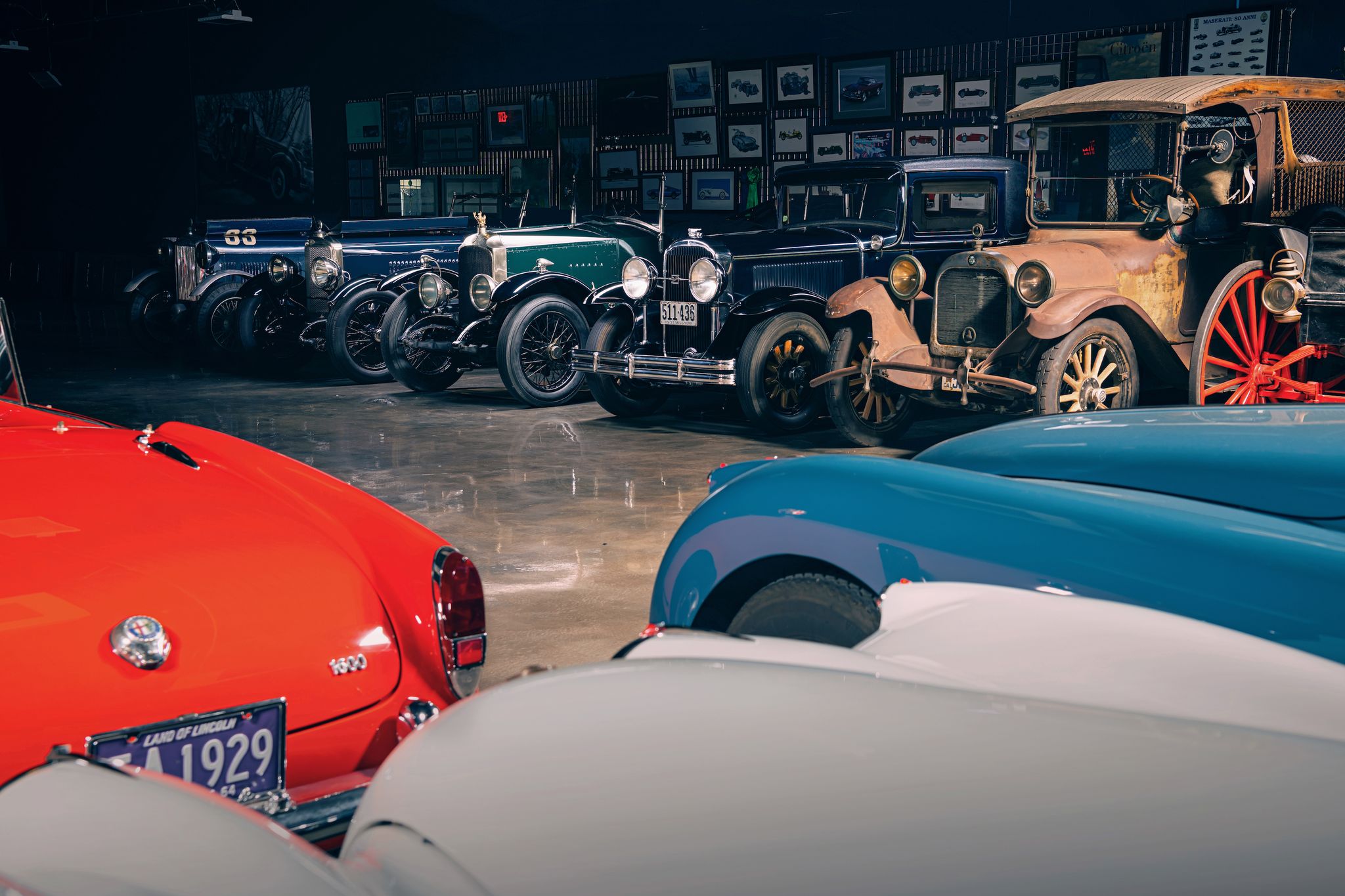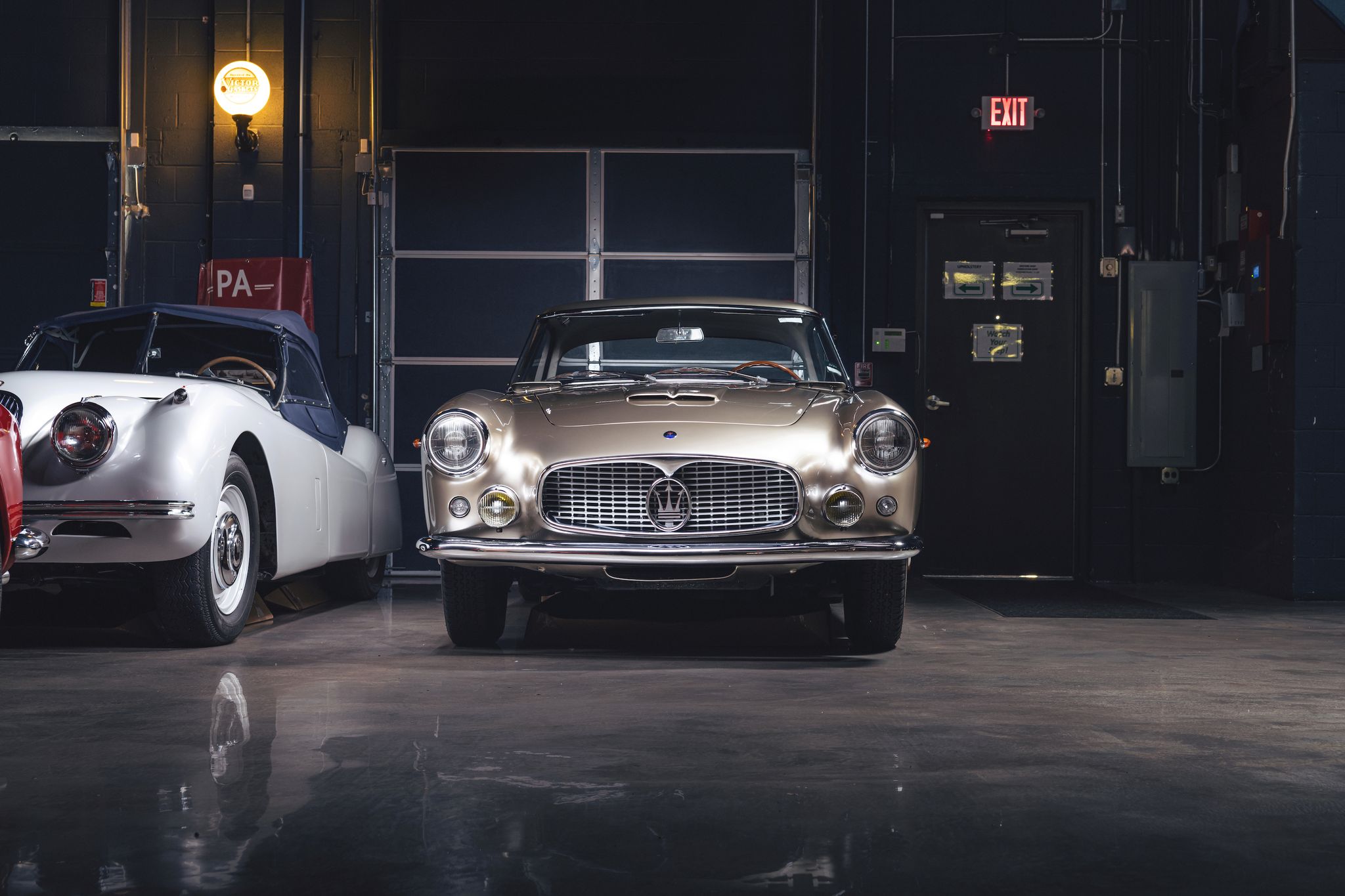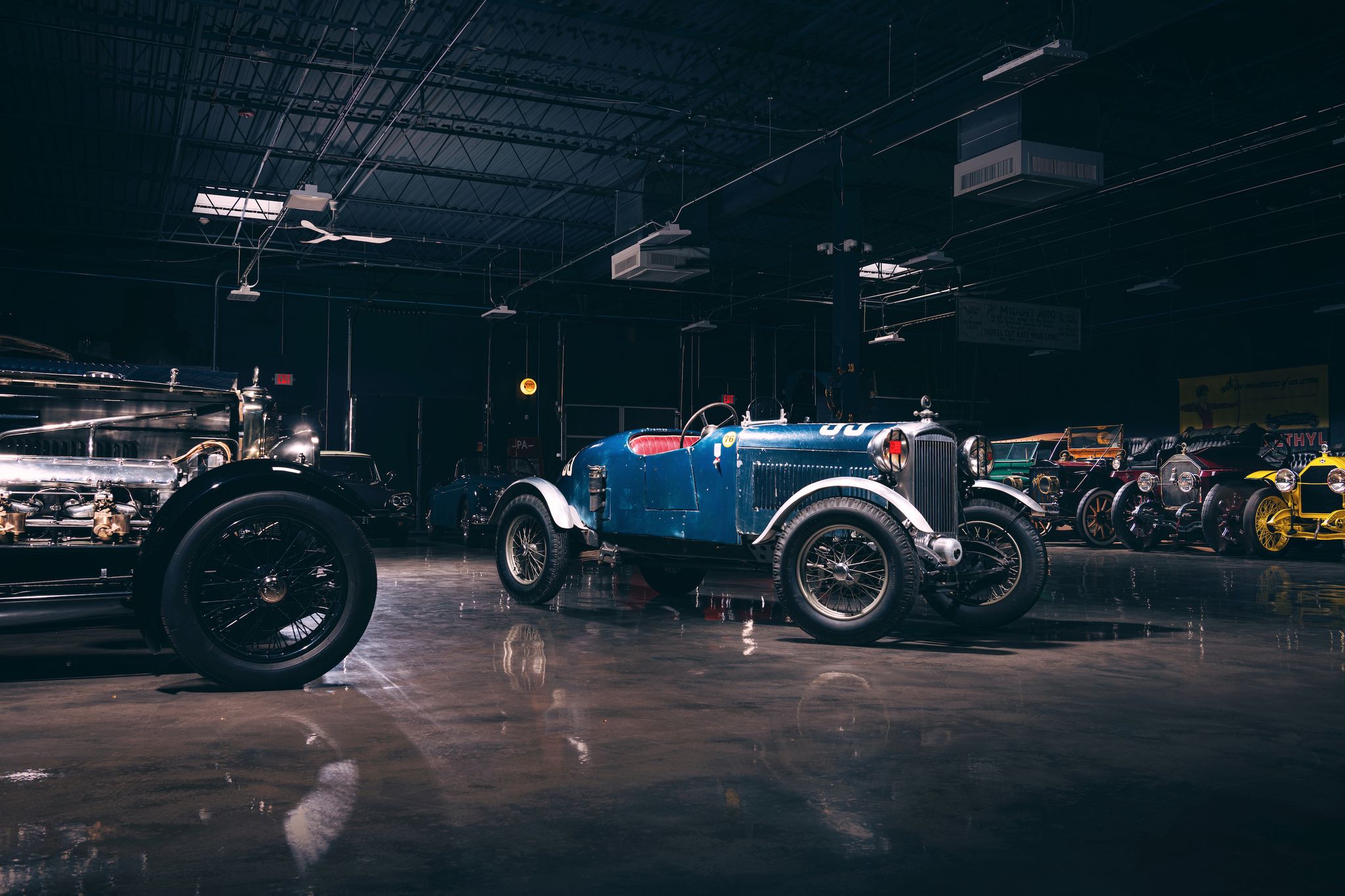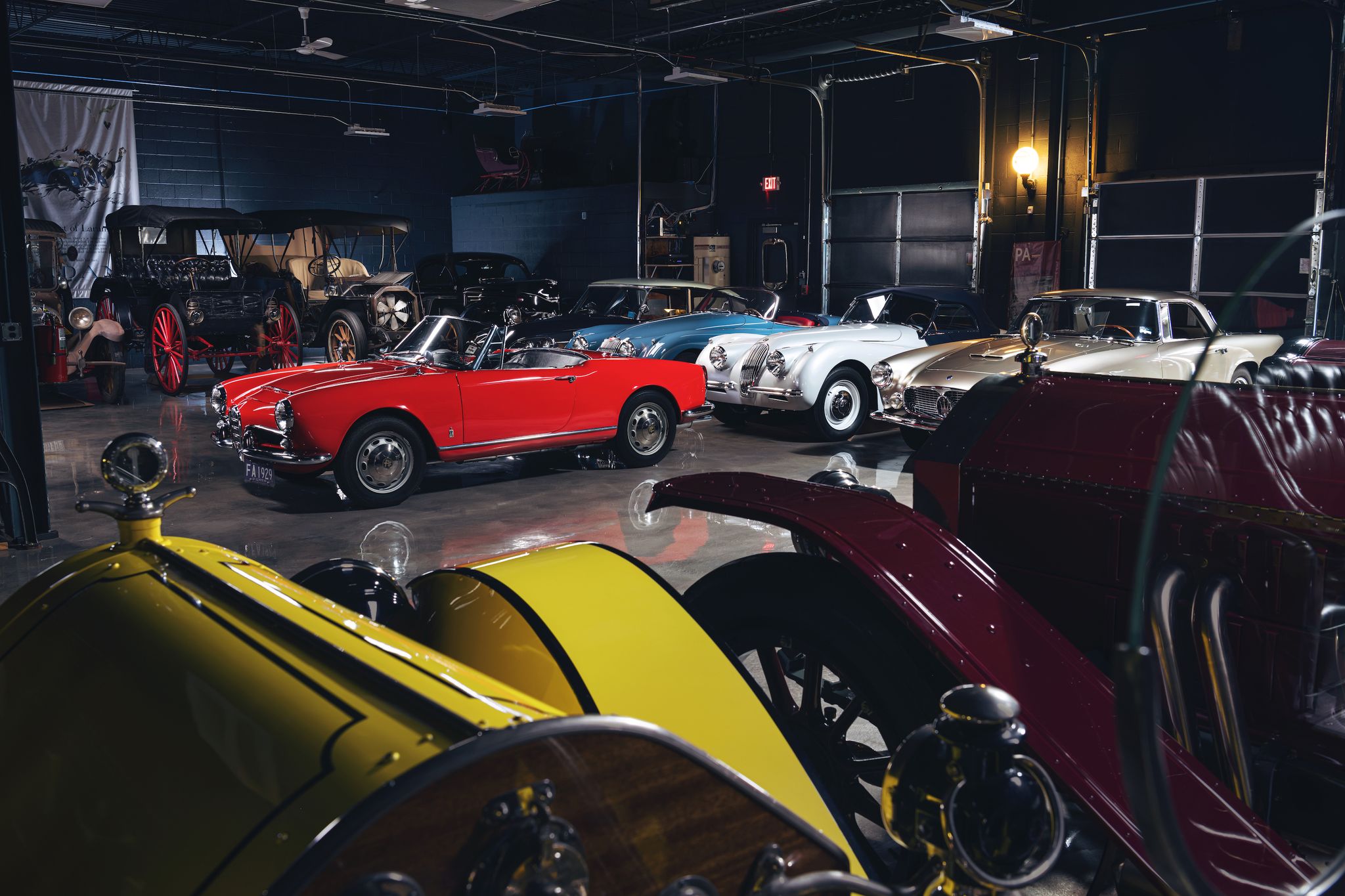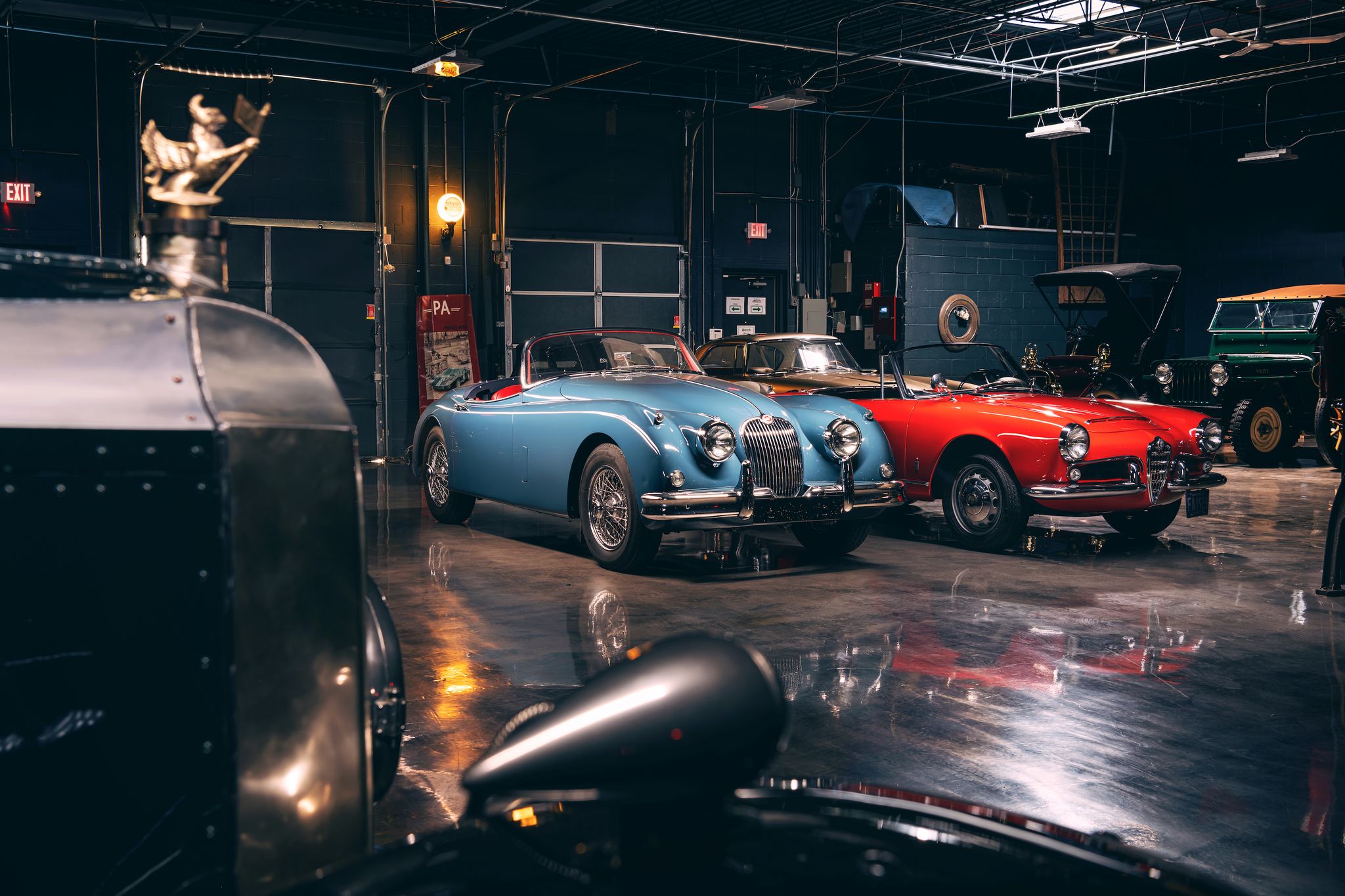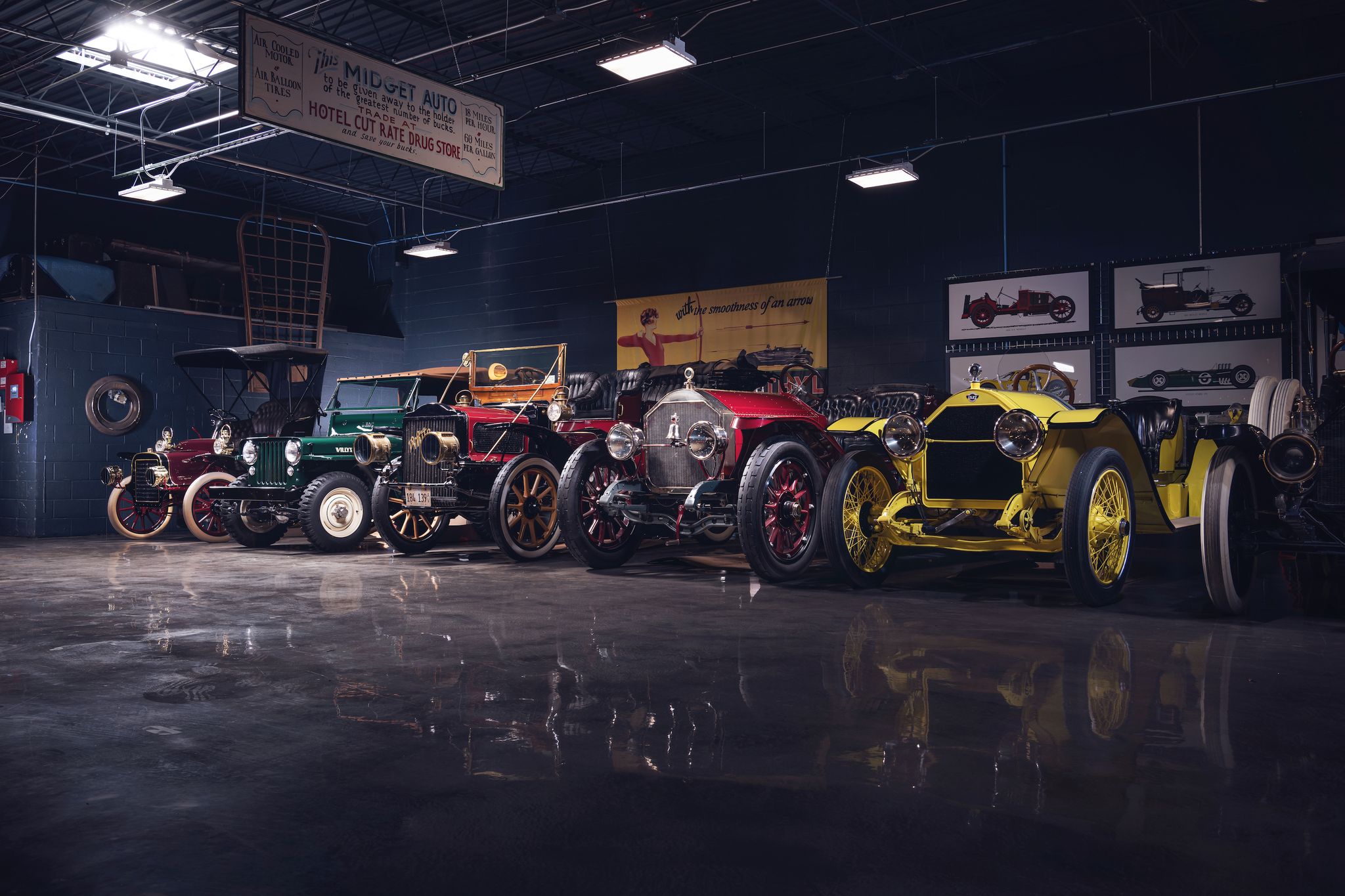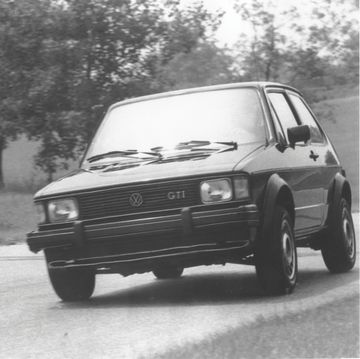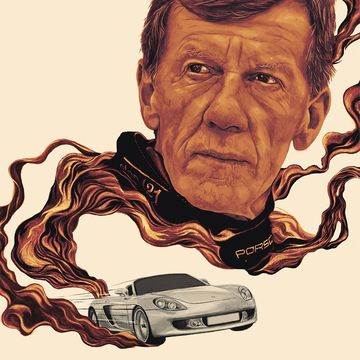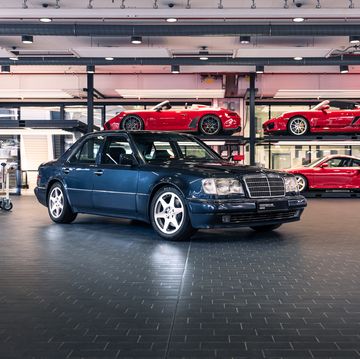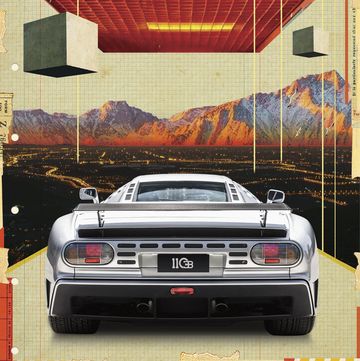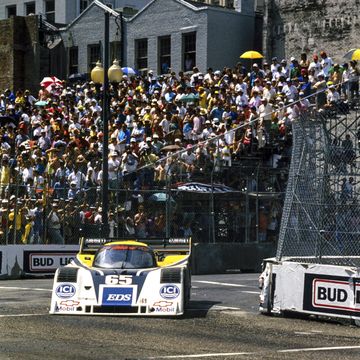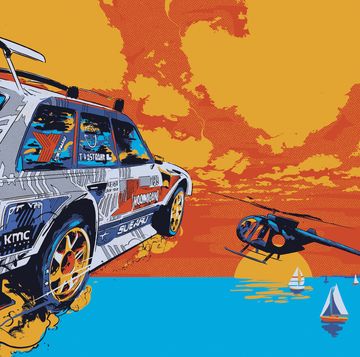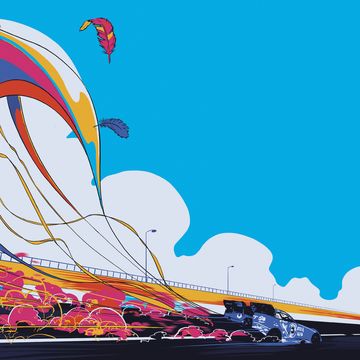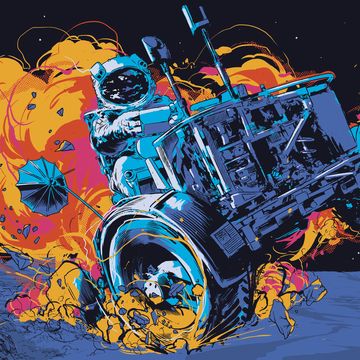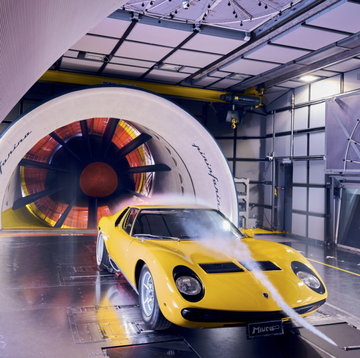Think about the big-name car collections. The Collezione Umberto Panini in Modena, Italy. The Revs Institute in Naples, Florida. The Petersen Automotive Museum in Los Angeles. Now consider the real heart and soul of connoisseurship—the smaller collectors, like Hank Davis, owner of Hank’s Garage in Bucyrus, Ohio, with his 14 Edsels, or Robert Lederer, owner of Chicago Parts & Sound, whose cars you see pictured here.
Now imagine all that machinery left to rot. From the talk we heard at Monterey Car Week in August, it seems the car-collector world is facing a crisis. Future generations won’t care about vintage vehicles. The internal-combustion engine will be legislated off the road. The values of prized cars will plummet.
This story originally appeared in Volume 8 of Road & Track.
SIGN UP FOR THE TRACK CLUB BY R&T FOR MORE EXCLUSIVE STORIES
Can that be true? Road & Track spoke with some big thinkers in the collector world to try to see into the future of vintage automobiles. Their view is not nearly as dire as the whispers we’ve heard.
Three conclusions stand out. First: Early automobiles will be viewed like fine art—celebrated, perhaps not frequently driven, museum items. “What the automobile has done for personal freedom of mobility is epic,” says Bruce Meyer, the founding chairman of the Petersen. “There will always be a need to tell that important story.”
Second: “The concours phenomenon will get more exciting,” says Ed Welburn, a Pebble Beach judge and former head of global design at General Motors. “The classic cars of today will still be there, but there will be so much new that we haven’t even seen yet that will be considered classic someday.”
Finally, and most reassuring: There will always be passionate car fans. “Why do people collect Rembrandts and Picassos? Because they are true works of art,” says Ken Gross, vintage-car expert and author of countless automotive articles and books. “The same thing can be said about any number of automobiles of the past.”
The Collector Icon
Miles Collier
Car fans of today fear that future generations won’t value classic cars the way we do. Do you think that’s true?
There are literally millions of automobiles in the world that their owners define as being “classics”and “collector cars.” I think those will perseverate out there in the environment, at least some significant percentage of them. So the classic car will always be around. The next generation is interested in automobiles—on their terms. We shouldn’t judge how they are interested on our terms. The tuner culture, the drifting culture, lowriders—all of them are ways that various demographics have found to interact with the automobile. That is not going to change.
Are there new cars today that will become this generation’s Gullwings or Ferrari GTOs?
There’s a fundamental problem with that question. Will cars made today even be operable in 20 years? The automobile is the single fastest-growing platform for computing power. So like an iPhone, it’s capable of fantastic feats of technological virtuosity. But it’s unfixable and unmodifiable. The only way we can advance is to junk the one we have and get a new one, like we do with our phones. So it’s going to be hard for most cars of today to occupy that place in our hearts and minds that older cars have for many people. The good news is that older cars may ultimately be recognized as coming from the golden age of the collectible automobile, and that will always attract people.
Will future generations have the skills needed to restore and care for antique cars?
That is the big question. At the level of basic technology, the relatively simple things, the answer is yes. If we look at the portfolio of skills necessary as we move toward the more esoteric, such as authentic coach painting, the building and maintenance of wooden wheels, the servicing of early-generation Lucas fuel injectors, those kinds of things? The problem becomes more difficult. That, however, is one of the inflection points where the Revs Institute can move the needle. For those skills to last, we need master classes, technicians in residence, dedicated training in these esoteric skills. That is and will continue to be part of the Revs Institute’s mission.
Many collectors today fear that future generations won’t value classics monetarily the way we do now. They worry the bottom could fall out of the market. Your thoughts?
The way to think about this is to look at analogues. We can consider the world of fine art or antiquities. What do we see in these fields? In every instance, the very rare, the very special, the extraordinary objects over time continue to set new highs. Yes, macroeconomic factors can depress a whole sector. We see prices move cyclically. But the bottom line is, those extraordinary cars that reflect all that is great in the human mind and spirit will continue to appreciate. There will always be cars for different purses and purposes, and cars that are not as expensive that are equally engaging. But there will always be an elite group that are enormously valuable.
In your new book, The Archaeological Automobile, there’s a chapter about the archaeology of the future. Tell us what that means.
We should think of the automobile as a paradigm of other disruptive technologies that we are being faced with now and will be in the future. Artificial intelligence, genetic engineering—these are disruptive technologies that will change society enormously, just as the automobile did in the 20th century. The paradigm for what new disruptive technologies will do in the future is the automobile of the past.
The Design Icon
Ed Welburn
As car fans, we hear people say younger generations just aren’t interested the way we are. Is that true? What can we do about it?
Maybe the worst thing we can do is try to persuade young people to be interested in cars. They need to discover it on their own and create their own new chapter, which might be something very different from how we perceive things today. We have to embrace that.
Another criticism says that kids today think of cars as appliances. Do you agree?
I’ve always thought of cars as an extension of your personality, or like your outermost layer of clothing. There’s an emotional connection between the vehicle and the driver. People talk about a vehicle as if it has a personality, because it does. It has characteristics, performance, luxury. All of that makes it a living and breathing thing that you interact with. You can’t say that about a refrigerator. Vehicles will change in many ways in the future, but that won’t.
You have been hugely influential in the Corvette world. What generation will increase most in value in the future?
The C3 was very exciting when it came out. It was like a spaceship. Then the enthusiasm went away for a while. Low horsepower sort of tainted it. But for a whole group of people now in their thirties and forties, C3 is their favorite generation. I think it will stand out as one of the stars of Corvette in the future as that age group becomes more influential.
What other sectors of vintage cars do you think the next generation will really embrace?
One area that I think will create movement in the future is the luxury cars of the Sixties—the Riviera, the Eldorado, the Continental. I think they will become more collectible. They are now but will become more so.
You were heavily involved in the design of the C8. It was a massive leap of faith to put the horse behind the carriage. Will it be considered a classic Vette in the future or not a Vette at all?
I have been reading articles and headlines since the Sixties about mid-engine Corvettes. There were concepts and prototypes over the years. That jump to mid-engine in the production car was a huge deal, because you had a loyal fanbase who loved their front-engine cars. But I believe the C8 will be highly sought after in the future. It presents something really new while maintaining the original DNA that made it an icon in the first place. Low-volume production is important too. For all the reasons that cars become classic, the C8 will be a classic for future generations.
The Automotive Entrepreneur
Randy Nonnenberg
Why do you think it’s important for the next generation to get involved in the vintage-car scene?
So much of what we do today is digital and found on screens, and our kids spend too much time staring at screens and living vicariously through watching others. That is not good for the soul. With old cars, the analog technology makes you engage. They give you the opportunity to have your own adventures. If your Tesla breaks down on the side of the road, what do you do? You call SOS. But if your old car breaks, you can fix it and feel like you have accomplished something. And that is a forever thing that transfers to other problem-solving skills.
Bring a Trailer has gotten younger people involved in the hobby. Was that your intention?
I think of Bring a Trailer as a good entry point for young people to get involved in a lifelong passion. When I co-founded it, I was 29. Nobody in print or online was talking about the sales of cars that I liked—cheap stuff. I wanted to engage but didn’t have much money. I needed obtainable stuff, the four-by-fours and Datsuns and project BMWs. That has been in the Bring a Trailer DNA from the start, and it has resonated with a huge number of younger people.
Are there any cars being built today that will be thought of in the future as the Gullwing of our current era?
A Gullwing in its day was exotic and expensive. There’s crazy stuff on the high end of the spectrum today—the Ford GT, some Lambos—that people are going to buy and bubble wrap and put no miles on. Twenty years from now, they will auction them for a ton of money. But what interests me more are the collectible cars that normal people can afford: a Ford Raptor, a Subaru STI. Porsche has done a great job creating special-edition cars and colors, even on its lower-end models. I think all of those cars will be relevant in the future because they will be rare finds if kept in good condition.
Do you think it’s possible that someday gas-powered cars will be legislated off the road?
Probably. But if that happens, it will be pretty far down the road. The question is, what does that mean for collectors? It will obviously be a shame if you’ve got a 1966 Mustang in your garage and you can’t drive it. I think if that happens, it will be outside our lifetime, but sooner in crowded urban areas. The use of old cars may get narrower in the future, but it will still be fun for people who find away. The enthusiast crowd will always find a way.
The Next Gen
David Phillips
Do you think your generation has the same kind of passion for automobiles that your father’s did?
Absolutely. Being one of these younger guys, I’d say it is very much alive and well in my generation. But the young people have different interests. It’s not the same kinds of cars that the older generations associate with. I’ve had my Chevelle since I was 14. I would go to car meets at 3 a.m., and there’d be 400 or 500 cars there, and they were all kids with their Toyotas and Hondas and Acuras. They’re having fun with cars the same way my dad did when he was my age with his 1969 Camaro. These kids love drifting the way that, 40 years ago, kids loved drag-racing. The passion has changed, but I haven’t seen evidence that it’s shrinking.
Will there be, in the future, people with skills to care for vintage collections like the one you work on?
Look at it this way: McPherson takes 50 students per year in the automotive-restoration program. Some people drop out. So you’ve got, at most, 50 people entering the world of automotive restoration each year with a college degree in this field. How many of those, for example, might have a specialty in Brass Era cars, like the 1910 Peerless in the collection I work on? Very few. It’s a little frightening.
What should be done to make sure coming generations assume responsibility for the care-taking of old cars and collections?
The hardest part is blending these worlds and exposing young people to these cars. Because they don’t see them at their local cruises. Tracks like Autobahn in Illinois and Grattan in Michigan have drifting events, and they have vintage racing events, but never at the same time. So kids aren’t exposed to these old cars. There’s a communication gap. Some concours are starting to experiment. For example,I was at the Keeneland Concours a couple of years ago, and for the first time at a major concours, there was a tuner class. You had all these kids with their cars being judged, while at the same time I was there with a big Packard. That’s progress.
A.J. Baime is the author of seven books, including Go Like Hell: Ford, Ferrari, and Their Battle for Speed and Glory at Le Mans, and The Accidental President: Harry S. Truman and the Four Months that Changed the World. An R&T editor-at-large, he has driven cars on racetracks all over the U.S. and Europe, going back to 2007. He is proudly the R&T staff’s slowest track driver.
